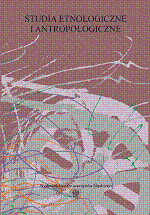Pomysł na Katowice - kolejna corbusierowska utopia czy realna miejska tożsamość
An idea for Katowice - yet another Corbusier's utopia or a real urban identity?
Author(s): Elżbieta Anna SekułaSubject(s): Anthropology
Published by: Wydawnictwo Uniwersytetu Śląskiego
Summary/Abstract: A planned reconstruction of an Upper Silesian city raises extreme emotions among its inhabit¬ants (and not only). The authorities have a particular vision of this place, definitely a modern one, basing on the urbanist and architecture solutions introduced in the metropolis of Europe and all over the world. The reconstruction is to cover the centre of Katowice. The text presents the winning project of an architecture studio by Tomasz Konior. The roundabout of the art is always the beginning of the path which is to be created in Katowice. It will be composed of the laces in which the current artists presenting different actions and using different media will be active. The image and function of this part of the city will change completely. However, such ideas and actions are arbitrary in nature. It does not mean that the choice is wrong. The “French way” shows that the most visionary realizations in Paris would never appear if they were based on social advice. They also barely take into account local traditions and forms present in the urban landscape grounded in the awareness of Silesians. The aim is to make the new symbolic surplus of the space in Katowice become the basis allowing for the self identification of both those inhabitants who are inclined to accept social changes concerning the whole region and those from the outside — settling in here for good and tourists. It goes about the creation of specific urban attractions which will create a new image of Katowice, interest, distinguish the space of this Upper Silesian city and at the same time remove negative associations built on the stereotypes of mine landscapes. Is such a reconstruction (because this is the task which both the clerks, urbanists and architects aim at) based on the spacious structure possible? To what an extent is the compromise, the combina¬tion of the new one with the elements of the local tradition, allowing for an ease of a revolutionary change in the urban identity necessary? What creates the so far identification of the city and its inhabitants, what is worth saving and which signs and perspectives should be definitely disposed of? What will new Katowice look like? It is worth remembering that it has been a “cycling city” since its creation, which to a large extent decides on the specificity and potential mobility. All these questions constitute the frame of a work.
Journal: Studia Etnologiczne i Antropologiczne
- Issue Year: 2010
- Issue No: 10
- Page Range: 151-163
- Page Count: 13
- Language: Polish

